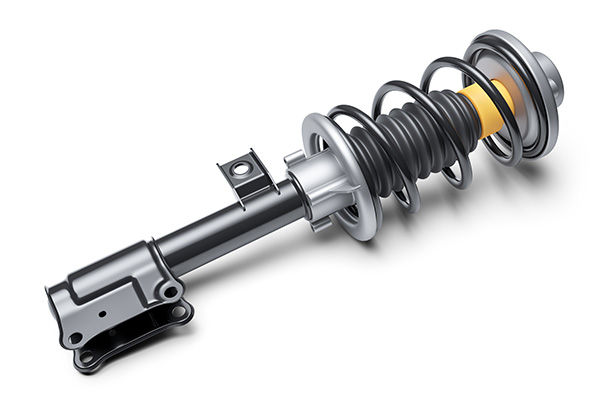
When your car starts bouncing more than usual over speed bumps or feels unstable while driving on uneven pavement, the cause may not be your tires. Worn or damaged shocks and struts are often the real reason behind that bumpy, unsettled ride. These components are essential for maintaining your vehicle's stability, comfort, and safety.
If the road feels more chaotic than it used to, or you notice unusual movement after hitting a bump, your suspension system may be due for attention. Learning how shocks and struts work, and what symptoms to look for, can help you catch problems before they affect your safety or cause more costly damage.
The Role of Shocks and Struts in Your Suspension
Shocks and struts perform a similar job in your car’s suspension, but they aren’t exactly the same. Both help control the motion of your vehicle’s springs, which absorb road bumps. Without these components, your car would continue bouncing long after each bump.
Shocks (short for shock absorbers) are standalone components that work with separate springs. Struts combine the shock absorber and the spring into one unit and are often used in front suspensions. Whether your car uses one or the other depends on the design of the suspension system.
In either case, their purpose is the same: control motion, maintain tire contact with the road, and reduce vibrations and bouncing.
Common Signs of Worn Shocks or Struts
When these parts begin to wear out, your car may show several warning signs. Ignoring these early indicators can lead to more serious handling problems, uneven tire wear, or suspension failure.
Here are some of the most common symptoms:
- Excessive bouncing after going over bumps
- Nose diving when braking
- Rear-end squatting when accelerating
- Uneven tire wear
- Steering that feels loose or unstable
- A drifting or pulling sensation during turns
Another noticeable sign is when your car feels like it's rocking or swaying more than usual, especially in crosswinds or while cornering. That extra motion can make driving feel less confident and more fatiguing.
Why Suspension Problems Affect Tire Life
One of the overlooked effects of bad shocks or struts is uneven tire wear. When the suspension isn’t doing its job properly, the tires don’t maintain consistent contact with the road. That can cause certain parts of the tire tread to wear faster, especially on the edges.
Over time, this not only shortens the lifespan of your tires but also affects traction and braking performance. If you’ve had to replace tires sooner than expected, the suspension may be a contributing factor.
How Shocks and Struts Wear Out
Like brakes or tires, suspension components wear gradually with use. They may not suddenly fail, but performance will slowly degrade over time. Most shocks and struts start showing signs of wear between 50,000 and 100,000 miles, though that can vary depending on your driving style and the roads you travel.
Driving on rough roads, hitting potholes, or carrying heavy loads more often will wear out these components faster. It’s also common for one shock or strut to wear out before the others, which can throw off the balance of your vehicle.
Do Shocks and Struts Always Need to Be Replaced in Pairs?
Generally, yes. It’s best to replace them in pairs (either both front or both rear) so the suspension remains balanced. Replacing only one side can cause uneven handling or braking and may even wear out the new component faster.
Your technician may also recommend a wheel alignment after replacing suspension parts. Since shocks and struts play a role in vehicle height and geometry, a fresh alignment helps maintain proper handling and prevent tire wear.
Safety Implications of a Bad Suspension
A bouncy ride may seem like just a comfort issue, but worn shocks or struts can seriously affect your ability to stop or steer. Poor suspension reduces how well your tires grip the road, especially on wet or uneven surfaces. In emergencies, that reduced control could be the difference between avoiding a hazard and ending up in an accident.
Suspension problems can also make braking distances longer. When the vehicle dives forward during hard braking, less weight is transferred to the rear tires, which affects stability and stopping power.
Have Your Suspension Inspected at Neighborhood Tire Pros in Suwanee and Decatur, GA
If your car feels too bouncy or you're noticing any signs of suspension trouble, it’s time to visit Neighborhood Tire Pros in Suwanee or Decatur. Our team can inspect your shocks, struts, and overall suspension system to identify the problem and recommend the right solution. Keeping your suspension in top condition improves comfort, extends the life of your tires, and ensures safer driving for you and your passengers.
Schedule an inspection today in one of our locations and drive with confidence on any road.
- 2115 Lawrenceville Suwanee Rd Suwanee, GA
- 3589 Memorial Drive Decatur, GA
- 307 Clairemont Avenue Decatur, GA
- 557 Johnson Ferry Road Marietta, GA